VLT and Window Tinting
When people talk about window tinting, one term always comes up—VLT, or Visible Light Transmission. At first, it sounds technical, but in reality, it’s simple. VLT tells you how much natural light passes through a tinted window. The lower the number, the darker the tint looks. Understanding VLT isn’t just for car enthusiasts—it’s essential for homeowners, business owners, and anyone thinking about protecting their spaces with films from trusted providers like Black Bear Protective Films.
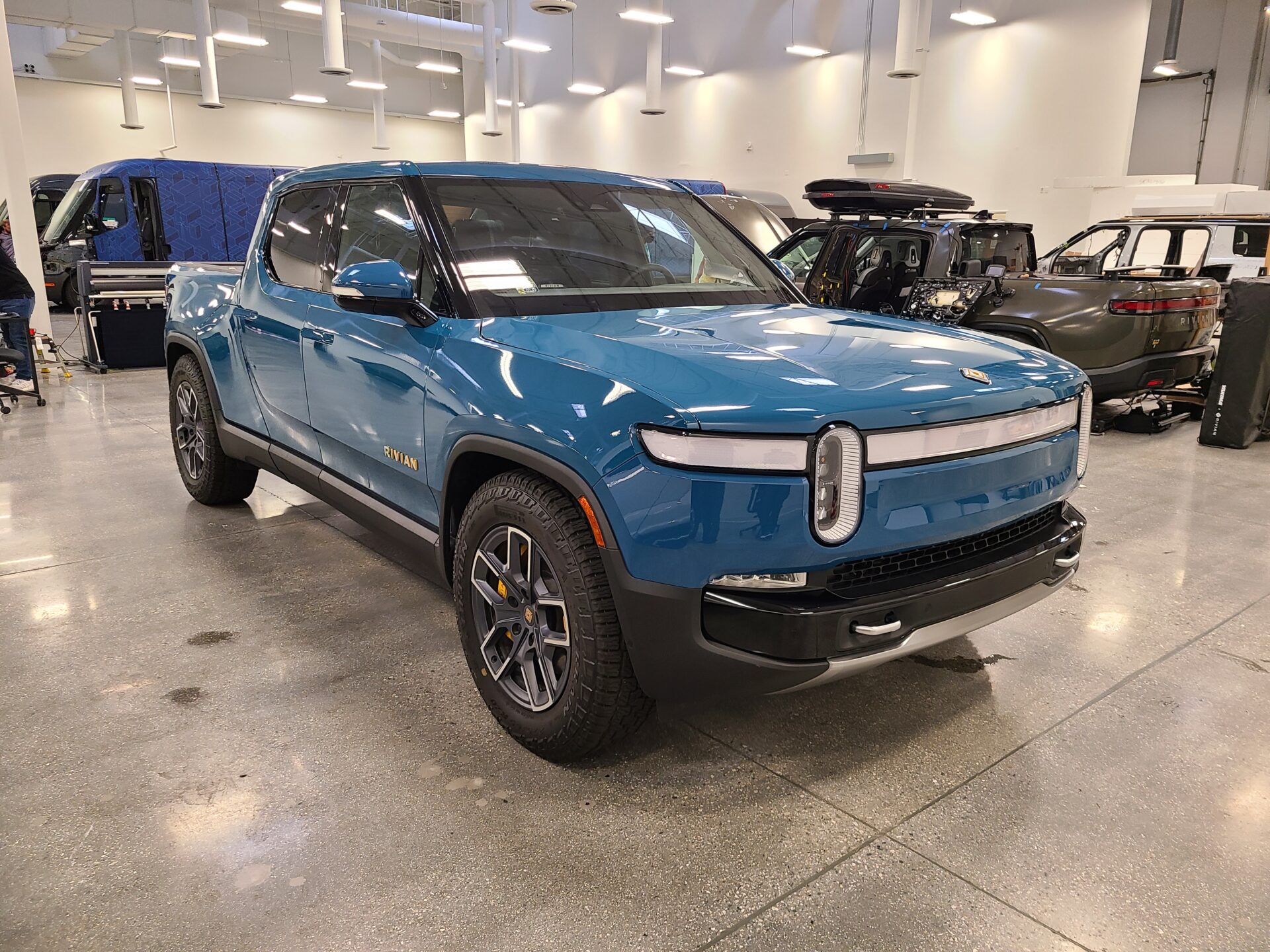
Breaking Down VLT (Visible Light Transmission)
Definition of VLT
VLT is the percentage of visible light allowed through a window after tinting film is applied. For example, a 30% VLT film means only 30% of sunlight passes through. It’s the balance between light and shade, science and style.
How VLT is Measured
Specialized light meters calculate VLT. They compare how much light enters versus how much passes through. This measurement is precise, ensuring both installers and customers understand exactly what they’re getting.
The Science Behind Light Transmission
Light transmission depends on the film’s thickness, material, and composition. Ceramic and metallized films often provide lower VLT while maintaining clarity. Black Bear Protective Films invests in advanced technology to ensure consistent, high-quality VLT ratings across its products.
Why VLT Matters in Window Tinting
Impact on Skin Protection
UV rays are sneaky—they slip through glass and cause damage over time. Lower VLT films typically block more rays, offering stronger defense. With Black Bear Protective Films, customers gain added peace of mind knowing their skin stays protected. Window tinting near me.
Influence on Heat and Glare Reduction
Ever struggled with glare on a sunny drive or sweltering heat in a living room? VLT plays a direct role in reducing both. Lower VLT films cut glare and heat dramatically, making environments more comfortable and safer.
Aesthetic and Privacy Considerations
VLT isn’t just functional—it changes how a space looks and feels. Lower percentages create a sleek, modern vibe and enhance privacy. Higher VLT films keep things bright but subtle. Black Bear Protective Films offers solutions that balance appearance and performance.
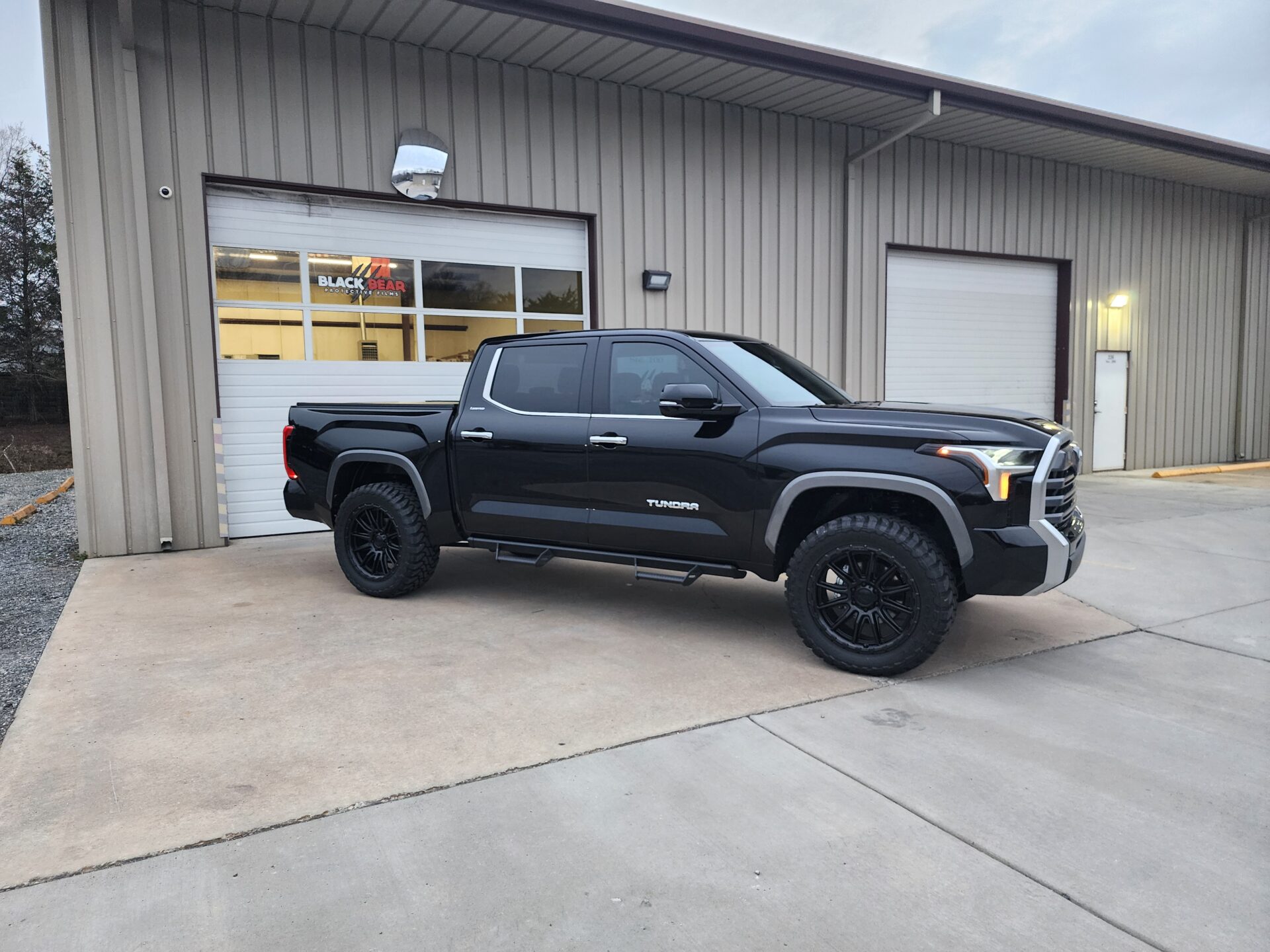
Different VLT Percentages Explained
High VLT (70% and above)
These films are nearly clear but still block harmful UV rays. Perfect for people who want protection without altering appearance. Many state laws also require at least one window to remain at this level for safety.
Medium VLT (40%–50%)
The sweet spot for many. These films reduce glare and heat without making interiors feel too dark. Black Bear Protective Films often recommends this level for office and residential spaces.
Low VLT (5%–20%)
These are the darkest tint, offering maximum privacy and heat rejection. Popular for vehicles, they deliver a bold look. However, they’re not always street-legal everywhere, making professional guidance critical.
VLT and Legal Regulations
State Laws on Window Tinting
Laws vary by state, and what’s legal in one place may not be in another. Regulations usually set minimum VLT percentages for front, rear, and side windows. Knowing the law is crucial before making a choice.
How to Stay Compliant
The best way to stay safe is to consult experts. Professionals use meters to test VLT during installation. Black Bear Protective Films helps customers navigate these rules and stay compliant without sacrificing performance.
Role of Installers like Black Bear Protective Films
Expert installers bridge the gap between customer preference and legal compliance. Black Bear Protective Films ensures every project balances style, comfort, and legality. That’s why clients trust them for reliable results.
Choosing the Right VLT for Your Needs
Automotive Window Tinting
Drivers choose VLT based on local laws, glare reduction, and aesthetics. Lower percentages add privacy, while higher VLT provides a cleaner look. With Black Bear Protective Films, you get guidance tailored to your driving needs.
Residential Applications
At home, the goal is comfort and energy savings. Mid-range VLT films keep interiors bright but block harmful UV rays and reduce cooling costs. Families benefit from a healthier living environment.
Commercial and Office Buildings
Workplaces need glare reduction without turning offices into caves. Medium VLT films strike that balance perfectly, creating more productive and comfortable spaces. Black Bear Protective Films offers solutions designed for commercial efficiency.
Benefits of Professional Window Tinting
Longevity and Durability
Professional-grade films last longer, resist fading, and hold up against peeling. Cheaper films often fail after a few years, but Black Bear Protective Films delivers products that endure for the long haul.
Precision in VLT Selection
Professionals take the guesswork out of choosing VLT levels. They use tools, experience, and knowledge of laws to recommend the right option. With Black Bear Protective Films, you’re never left guessing.
Myths and Misconceptions About VLT
Darker Tint Equals Better Protection?
Not always. While darker films may reduce glare, UV blocking comes from film technology, not shade alone. Even high-VLT films can provide excellent UV defense if engineered properly.
Is Higher VLT Always Legal?
Surprisingly, no. Some states require specific VLT levels, even if the film is clear. This makes professional advice essential. Black Bear Protective Films ensures every client avoids costly mistakes.
Black Bear Protective Films and VLT Expertise
Advanced Film Technology
From ceramic nanoparticles to scratch-resistant layers, Black Bear Protective Films relies on innovation. Their films provide accurate VLT ratings without compromising clarity or performance.
Customer Education and Guidance
The company doesn’t just install films—it educates. Clients learn about VLT, UV protection, and long-term benefits. Knowledge builds trust, and that’s a cornerstone of their service.
Trusted Authority in Window Tinting
Years of experience and a strong reputation make Black Bear Protective Films a leader in the industry. Customers know they’re getting reliable products with proven results.
Future of VLT in Window Tinting
Smart and Adaptive Films
The future is dynamic. Smart films with adjustable VLT are emerging, letting users control light levels at the push of a button. Imagine windows that darken instantly when sunlight intensifies.
Eco-Friendly and Health-Focused Innovations
With sustainability in focus, new films will combine eco-friendly materials with enhanced UV protection. Black Bear Protective Films is at the forefront of adopting these innovations to protect both people and the planet.
Black Bear Protective Films Serving the South Charlotte Community and Beyond in indian land
Black Bear Protective Films is dedicated to serving the diverse needs of the local community of Indian land, including individuals residing in neighborhood like South Charlotte With its convenient location near landmarks such as the Flat Branch Nature Preserve, Whole Foods Market
and major intersections like “Rea Rd & Ardrey Kell Rd and Rea Rd & Bryant Farms Rd (coordinates: 35.03683820833554, -80.79560521369304), We offer Window tinting services.
Get Window tinting Services at South Charlotte Now
Navigate from South Charlotte to Black Bear Protective Films Now
What is VLT and How Does It Relate to Window Tinting?
- Visible Light Transmission (VLT) is the percentage of visible light allowed to pass through a window tint film.
- Lower VLT % = darker tint (less light passes through), higher privacy and heat reduction.
- Example: 5% VLT (“limo tint”) lets only 5% of light through; 70% VLT lets 70% of light through (much lighter).
Key VLT Percentages & Their Uses
VLT % Description Common Use Legal Notes (US) 5% Very dark (“limo tint”) Rear windows, max privacy Often illegal on front windows 20% Dark Rear windows, some front windows Allowed in some states 35% Medium tint Popular front & rear windows Most states allow 35% front/rear 50% Light tint Front windows Common legal minimum for front 70%+ Very light tint Windshields, max visibility Required minimum for front windshield
Visual: VLT vs Light Transmission
[Bar Chart:
- X-axis: VLT % (5, 20, 35, 50, 70)
- Y-axis: % Visible Light Passing Through Bars showing increasing light transmission with higher VLT]
Additional Facts
- Most US states require at least 50% VLT on front side windows and 35% or darker allowed on rear windows.
- Window tinting blocks up to 99% of harmful UV rays and can reduce solar heat by up to 60%.
- Proper tinting balances privacy, heat reduction, and legal visibility requirements for safe driving.
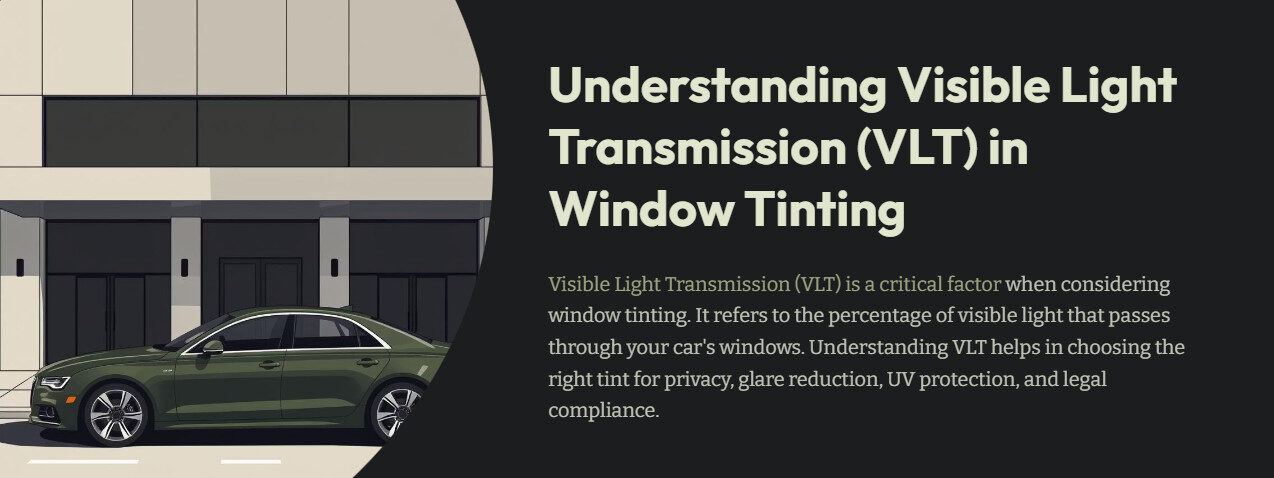
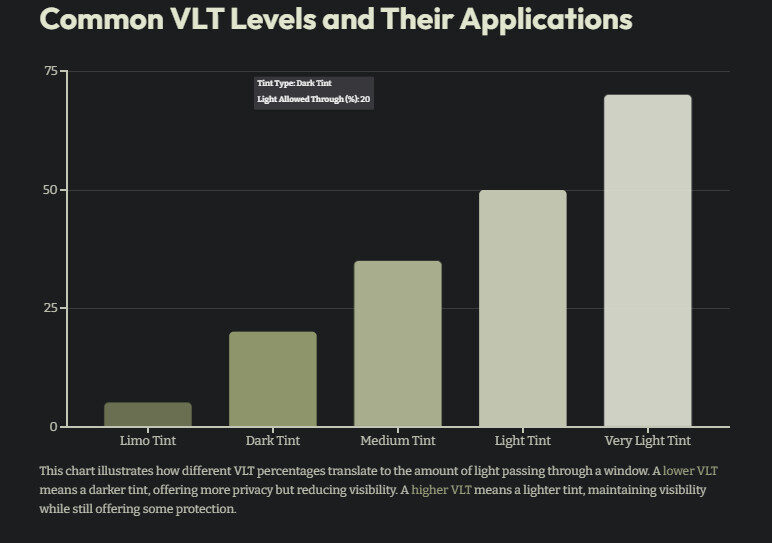
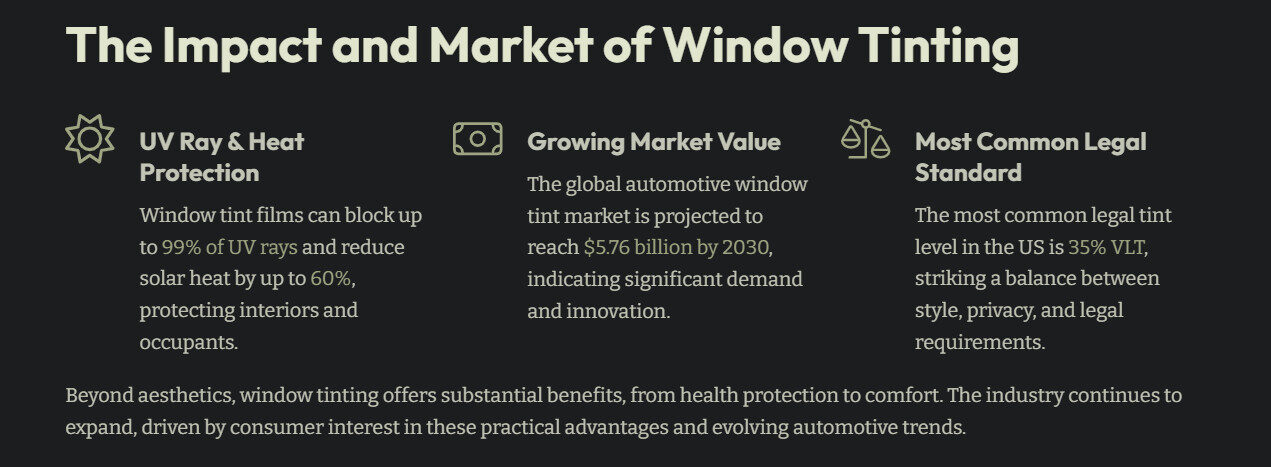
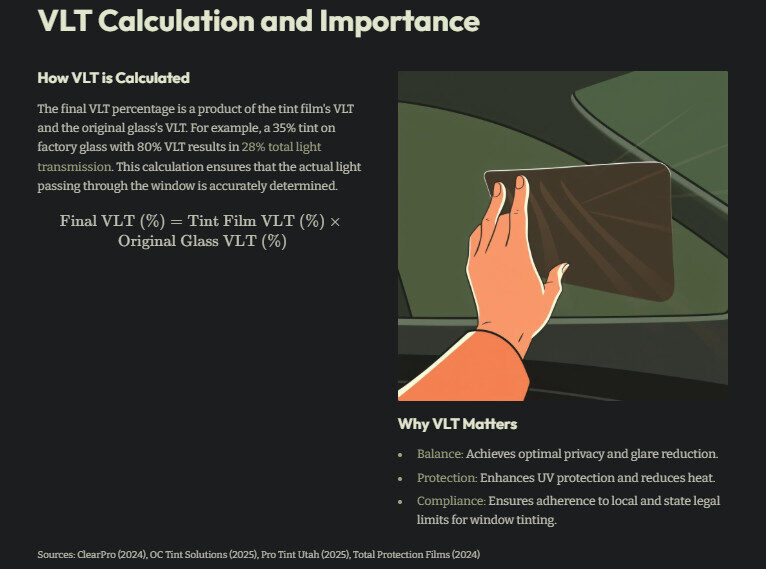
Sources: RAXTiFY (2025), ClearPro (2024), Pro Tint Utah (2025), Total Protection Films (2024)
FAQs
What does VLT stand for in window tinting?
VLT stands for Visible Light Transmission, meaning the percentage of light that passes through a tinted window.
Does a lower VLT percentage mean darker tint?
Yes. The lower the VLT number, the less light passes through, resulting in a darker appearance.
Can high-VLT films still block UV rays?
Absolutely. With advanced technology, even clear or high-VLT films can block up to 99% of harmful UV radiation.
How do I know which VLT is legal in my state?
Check state regulations or consult a professional installer like Black Bear Protective Films, who ensures compliance.
Why choose Black Bear Protective Films for VLT guidance?
They combine technical expertise, advanced products, and customer education, making them a trusted name in window tinting.
Our Other Blog Posts Related Window Tinting
Home Window Tinting: Ultimate Guide to Savings
What is Window Tinting and Types of Window Tinting Films
Window Tinting Laws South Carolina | Legal Tint Limits Guide
North Carolina Window Tint Laws | Full Legal Tint Guide 2025
An Essential Guide to Window Tinting & Skin Health for Kanawha Hills

